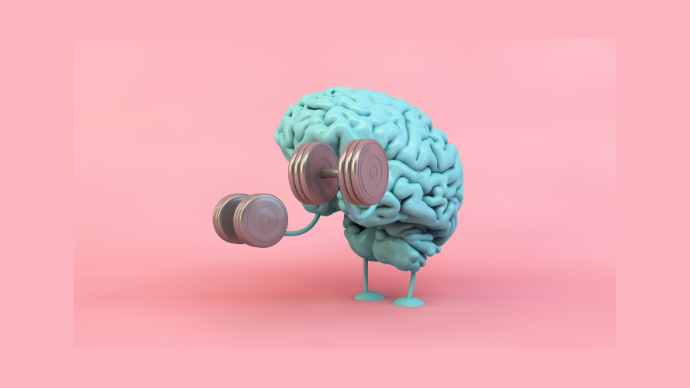You’ve likely encountered that nagging voice inside your head saying, “I can’t do this” when you’ve tried to improve some aspect of your wellness: eating more veggies, moving more, getting more sleep, or maybe meditating. Or maybe you’re critical of yourself when you look in the mirror. But don’t get disheartened. There’s some exciting neuroscience research that can help you understand and counteract that voice.
Tame Your Brain and Negative Self-Talk
The brain’s adaptability is one of its strongest features. However, with repeated negative thoughts, our brain strengthens specific neural pathways, making such thoughts occur more frequently. Think of this like a hiking trail: the more it’s traveled, the clearer it becomes.
Now, this isn’t just a metaphor. A study published in Nature Neuroscience found that neurons in our brains that fire together (think thoughts or behaviors) wire together, solidifying certain patterns and responses.
Moreover, when we entertain negative thoughts, parts of our brain, especially the amygdala, get into overdrive, releasing stress hormones. Prolonged exposure to these hormones can lead to complications like heightened anxiety levels and mood disorders.
Strategies to Harness Your Brain’s Potential
1. Positive Affirmations: A study from the Journal of Positive Psychology highlighted that individuals who practiced positive self-affirmations were more open to behavioral change. So, try to start your day with a positive statement about your health journey, such as “I am taking action to make today a great day.”

2. Mindfulness and Meditation: A comprehensive review in JAMA Internal Medicine suggested that meditation can improve anxiety, depression, and pain. By recognizing negative thoughts early, you can prevent them from taking control. There are tons of ways to be mindful. Try pausing to take a few breaths, or focusing on your senses – what you can see, hear, smell, taste, touch, or listening to a guided visualization. Find what works best for YOU!

3. Reframe and Challenge: Cognitive-behavioral therapy (CBT) techniques, which revolve around challenging negative patterns of thought and reframing them, have been shown to be effective in various conditions, including anxiety and depression. Next time you think, “I always give up,” try reframing it as, “Each attempt brings me closer to my goal.”

4. Neurofeedback: Also known as EEG (electroencephalogram) biofeedback, neurofeedback is a type of biofeedback therapy focused on the brain. The core idea behind neurofeedback is to provide real-time data about brainwave activity, allowing individuals to learn how to modify their own brain waves. Research from the Journal of Neural Engineering has shown positive results, especially concerning mood regulation.
5. Get Moving: A review in Health Psychology Review indicated that movement can have a positive effect on mood by releasing neurotransmitters like endorphins. The next time you feel stuck in a loop of negative thoughts, consider taking a short walk or doing a quick workout.

Use neuroscience to tame negative self-talk
Along your health journey, remember that evidence-based techniques are at your fingertips to combat negative self-talk – whether you have a perfectionist personality or tend to focus on what you don’t like about your perfectly imperfect body. Start with one and let the momentum build. Embrace the intersection of your own determination and the wonders of neuroscience, and trust that every step forward is progress backed by science.
Want some support to take your mind body health to the next level (no matter where you’re starting at)? Shoot me an email and tell me about yourself and your vision for your Best Self. ✨ Coach Tanya



